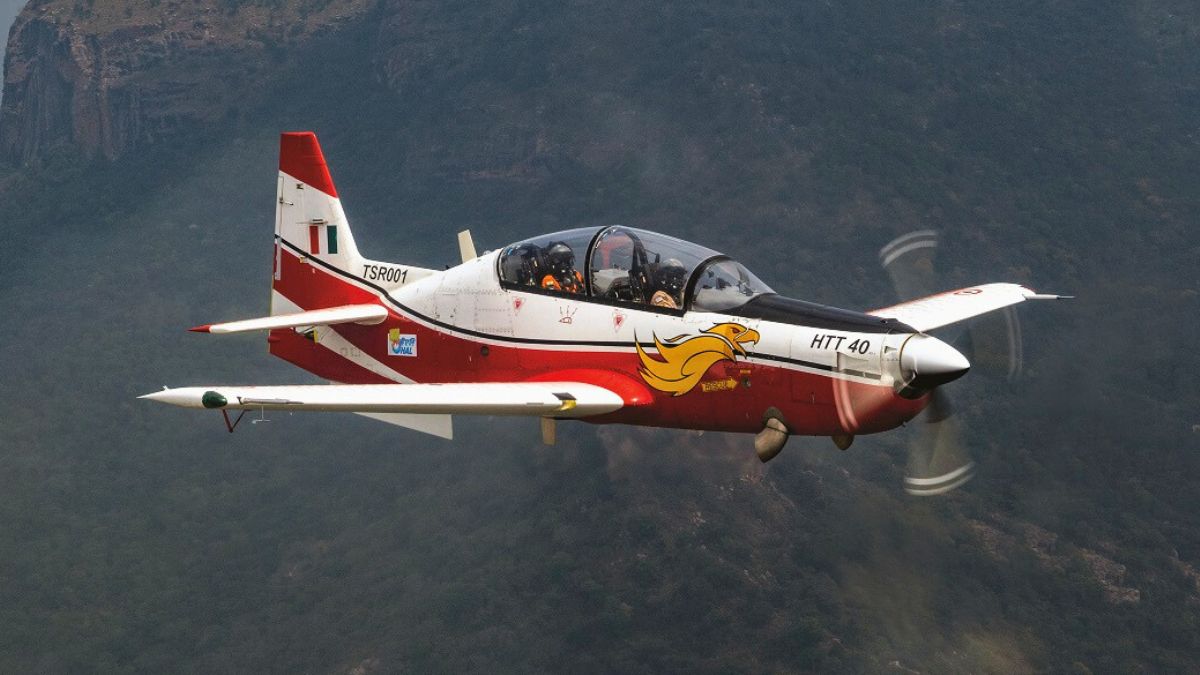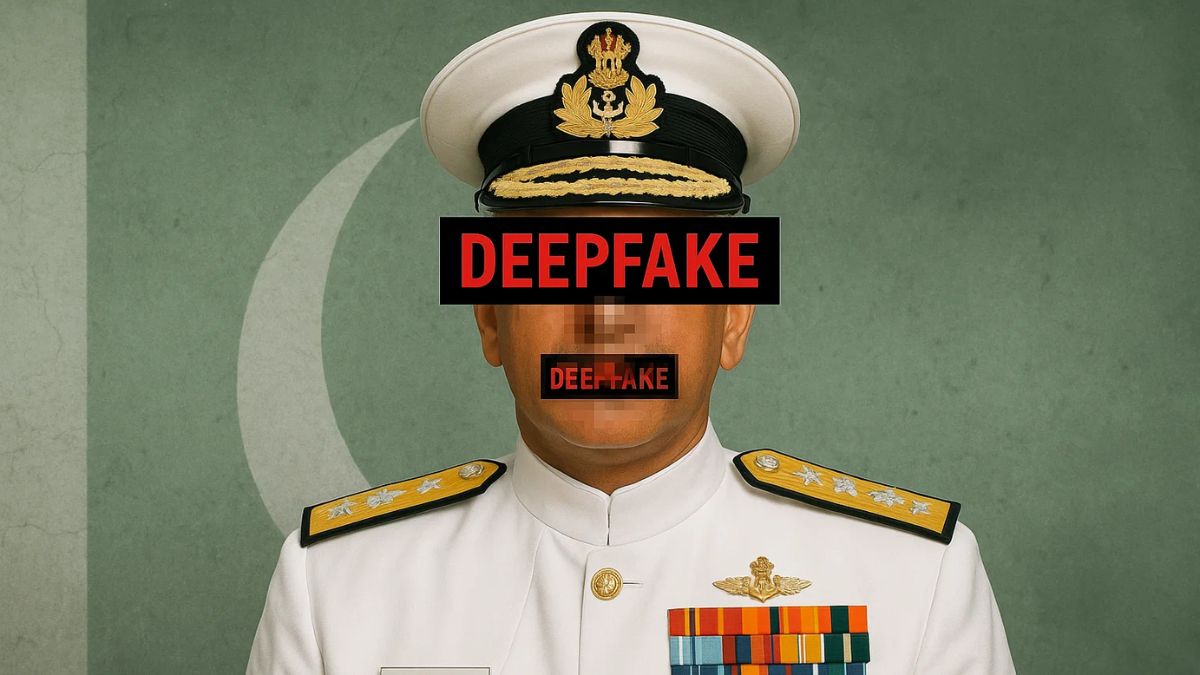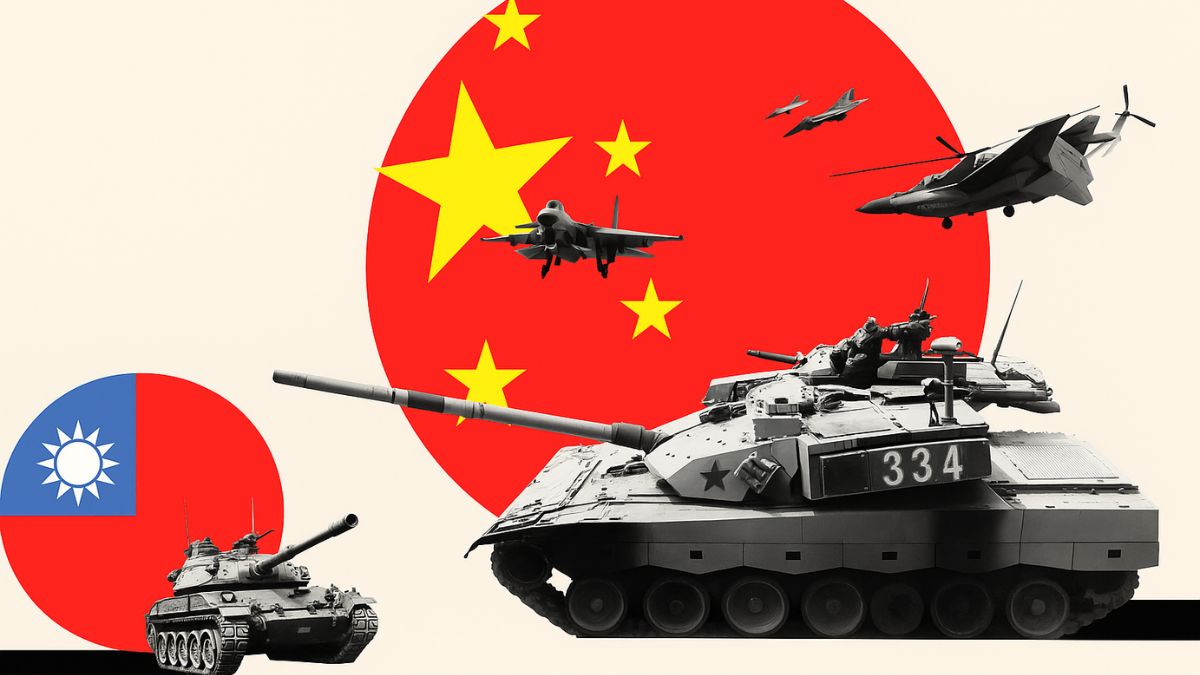HTT-40 Basic Trainer Aircraft: HAL Geared Up For Maiden Flight This Month – Status On Delivery To IAF?

India’s basic trainer aircraft programme is set to cross a crucial threshold as Hindustan Aeronautics Limited (HAL) prepares for the maiden flight of the first series-production Hindustan Turbo Trainer-40 (HTT-40). The flight, scheduled for late September, marks the transition from development to production.
With this, it also addresses a long-pending Indian Air Force (IAF) requirement for locally made basic trainers. Worth mentioning here is that 2 HTT-40 prototypes were flight-tested for more than 900 hours over 9 years before HAL reached series production of the platform.
HAL’s HTT-40 aircraft: How long has it been in making?
The HTT-40’s journey has been protracted. As mentioned above, 2 prototypes clocked over 900 hours of flight testing across nine years before HAL was cleared for series production. The upcoming flight will be conducted with a ‘Category B’ used Honeywell engine from the prototype fleet.
This is because fresh deliveries from the US firm have been delayed by supply chain issues. “The firm, like many others, is wrestling with supply chain bottlenecks,” one of the officials aware of the development told Hindustan Times.
HTT-40: What are the delivery timelines?
Under a Rs 6,838-crore contract signed in 2023, defence PSU HAL is mandated to supply 70 HTT-40s to the IAF. The first aircraft is now slated for delivery in January 2026, followed by 11 more within the financial year. HAL has the production capacity to roll out 20 aircraft annually from its Bengaluru and Nashik plants, provided engine supply keeps pace.
The HTT-40 is powered by Honeywell’s TPE331-12B turboprop engine. A $100-million deal was inked in 2022 for 88 engines/kits, of which 32 will be supplied directly and the rest built in India under technology transfer. While the first engine was due in September 2025, Honeywell has now committed to starting deliveries in November and ramping up to two engines per month thereafter.
HTT-40: A reflection of Aatmanirbharta?
The tandem-seat HTT-40 currently incorporates 56% indigenous content, which Hindustan Aeronautics aims to raise to over 60%. Its features include an air-conditioned cockpit, modern avionics, hot refuelling capability, and zero-zero ejection seats, making it both advanced and pilot-friendly for training environments.
What trainers does the IAF currently rely on?
At present, rookie pilots begin Stage-I training on Swiss-origin Pilatus PC-7 MkII trainers. Fighter stream trainees then move to PC-7 MkII and HAL’s ageing Kiran Mk-1A jets for Stage-II, before advancing to British Hawk aircraft for Stage-III. Transport and helicopter stream pilots shift to respective platforms after Stage-I.
Plans to induct more Pilatus PC-7 MkIIs collapsed in 2019 when the defence ministry suspended business with Pilatus over alleged corruption in its earlier Rs 2,900-crore deal for 75 trainers. A follow-on purchase of 38 aircraft was shelved, forcing the IAF to bank on HAL’s HTT-40 to meet its future training needs.
Replacing Kiran fleet: Status of the Sitara Intermediate Jet Trainer?
The IAF’s second pressing requirement is to replace the ageing Kiran fleet. HAL’s Intermediate Jet Trainer (IJT), sanctioned in 1999, faced decades of developmental setbacks. Rebranded as Yashas and upgraded, the IJT cleared a key milestone three years ago by successfully demonstrating six-turn spins.
HAL now hopes to field it as a credible Stage-II trainer, complementing the HTT-40 in reshaping India’s pilot training pipeline.







